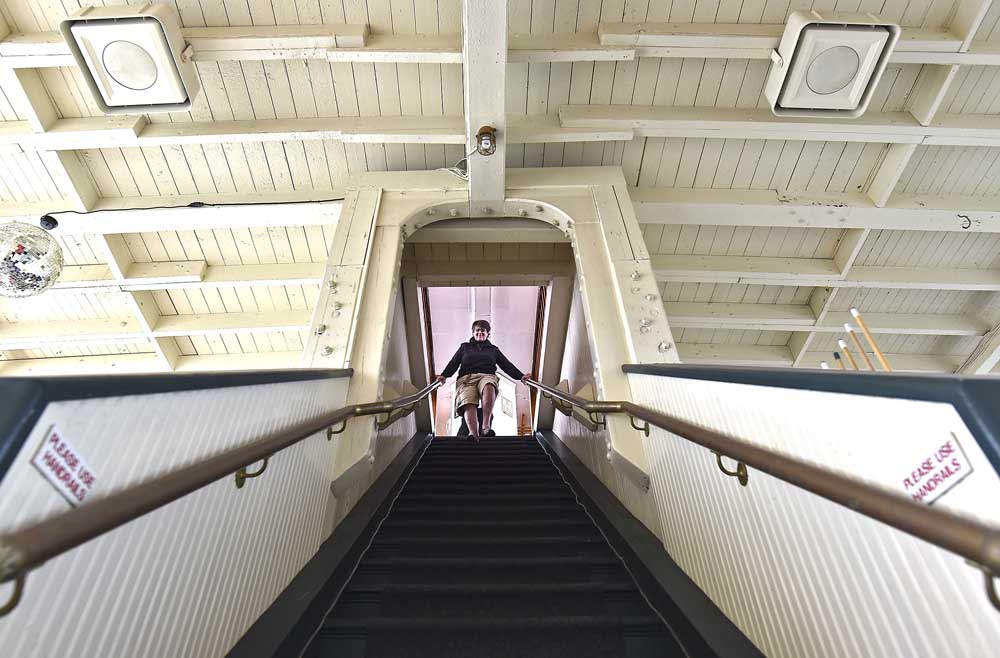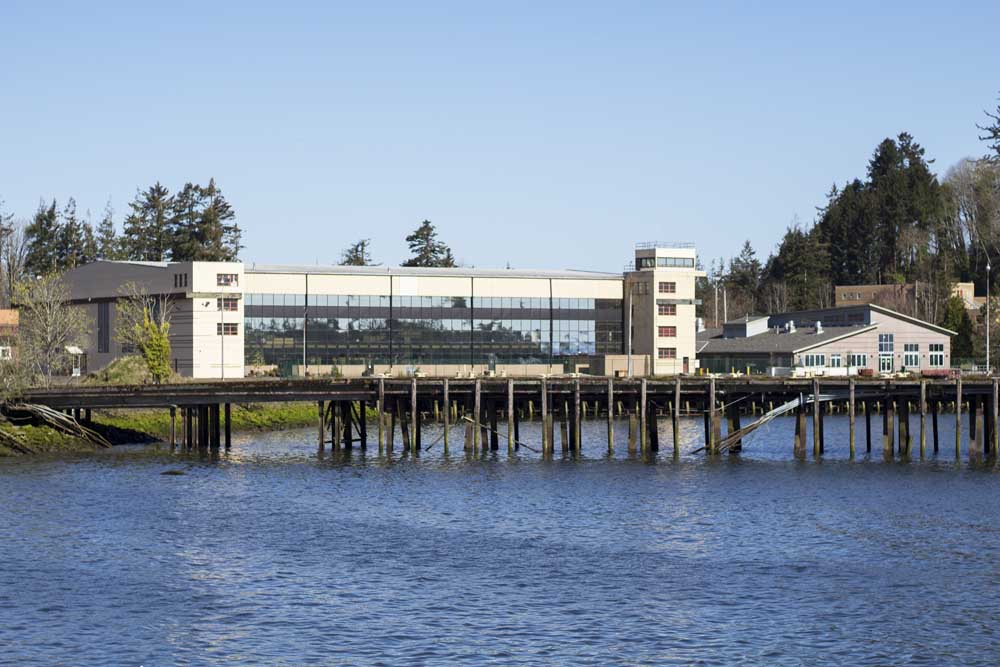Old Megler ferry battles rough financial seas
Published 10:15 am Tuesday, August 15, 2017

- The interior of the Tourist No. 2 features several decks with ample room for entertaining tourists.
Excitement abounded a year ago when the Tourist No. 2 pulled into Astoria’s 17th Street Dock.
The boat is a Columbia estuary icon, having shuttled residents and tourists between Washington and Oregon starting in 1924. It was sold out of local service when the Astoria-Megler Bridge was completed in 1966,
Organizers with the newly formed nonprofit Astoria Ferry Group wanted to turn the 93-year-old ferry into the waterborne version of the town’s Riverfront Trolley.
A year later, beset by the challenges of fixing up the Tourist No. 2 into a modern passenger-carrying vessel, Astoria Ferry has issued an ultimatum to the community: Raise $100,000 and recruit more boat-savvy board members by the end of September, or the dream will set sail.
“We need to make some real progress on maintenance issues toward the certificate of inspection in order for us to have the confidence of the public that we’re doing the right things, that we’re following a good process and that we’re making some headway,” said Astoria City Councilor Cindy Price, a board member.
The vessel’s next quarterly insurance payment of $2,200 is due in October. Price said that if the Astoria Ferry cannot meet the financial ask and recruit board members with maritime expertise to move the Tourist No. 2 toward certification by then, the nonprofit will dissolve and leave the vessel to owner Christian Lint.
Lint and co-Capt. Jim Peacock brought the Tourist No. 2 on a white-knuckle cruise to Astoria from Bremerton after the nonprofit placed a $15,000 deposit to buy the vessel on contract.
“It was a pretty horrendous passage,” board member Dulcye Taylor said, adding it took a week to get from Bremerton to Cape Flattery amid high winds and rough seas. After reaching the ocean, she said, it took only 20 hours to reach the Columbia River Bar.
The Tourist No. 2 pulled up a little more than a year ago to a waiting crowd. During last year’s Astoria Regatta, the ferry hosted several hundred visitors. Since then, the Tourist No. 2 has been moored at North Tongue Point, and Astoria Ferry has experienced a sobering look into the challenges of making the vessel an operating ferry again. The nonprofit has gathered around $70,000 in donations and paid nearly $40,000 toward the purchase of the vessel.
Organizers learned that Lint’s insurer for the vessel wasn’t going to renew the policy. “Most underwriters wouldn’t agree to indemnify a (93)-year-old, 100-foot all-wood structure operated by a nonprofit group with no history of maintaining such a vessel,” a report from Astoria Ferry to donors said.
Knowing the vessel could not be acquired without insurance, the nonprofit in December halted all fundraising and all but the most essential maintenance. In April, the group acquired a port-risk insurance policy, which covers vessels laid up long-term in maintenance but not public access.
Although the hull of the Tourist No. 2 has proven watertight, Price said the vessel has experienced water damage from above, leaving a musty interior and a mystery of where rain is intruding.
Astoria Ferry hoped to use local shipwright talent and space at North Tongue Point for the vessel’s underwater repairs. The nonprofit looked into whether a cradle used by local shipwrights could be retrofitted to pull the 96-gross-ton vessel up on one of North Tongue Point’s seaplane ramps. The idea proved unworkable and left the nonprofit with around $10,000 in outstanding naval architectural bills.
Price said the $100,000 would provide a cushion to help cover monthly expenses and some repairs, while repaying the debt and making arrangements for haul-out, somewhere upriver. But to fully repair and restore the Tourist No. 2 before U.S. Coast Guard inspection, she said, Astoria Ferry has estimated between $400,000 and $500,000.
Once the Tourist No. 2 is in operation, providing public excursions and hosting events, Price and Taylor said it will cost around $450,000 to $500,000 annually to operate, including the captain and crew. But they said the nonprofit believes the vessel can cover its own operating costs.
“It’s not a cheap operation, but it can make its own money, but only if it’s running,” Price said.
Taylor, a local business owner and president of the Astoria Downtown Historic District Association, said Astoria Ferry members have remained upbeat throughout the challenges, but that interest started to wane in the spring. Four of the group’s original eight board members stepped down, albeit staying on in advisory roles.
Taylor said the group, which includes historic preservationist Lucien Swerdloff and Astoria Yacht Club Commodore Bruce Faling, is looking for three or four new board members, preferably with some expertise and interest in old boats. “A retired Coastie would be great,” she said.
For more information, visit www.astoriaferry.com





